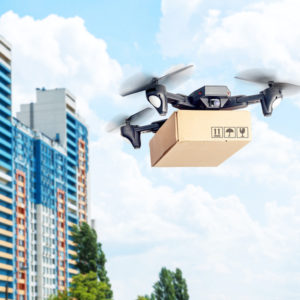The future may be whirring above your head.
There is a push to commercialize drones that equals any gold rush. Hundreds of drone makers, drone service companies and drone management firms are creating new machines, divining new uses, and planning to increase the penetration of their devices or services in a marketplace that is burgeoning.
Although dominated by DJI, the giant Chinese drone company with seven locations in the United States alone, there are hundreds of drone companies keen to get in on the action.
The drone takeover of the skies is not a thing of science fiction and Popular Mechanics anymore. It is real and it has begun. Soon the skies in cities will be getting as crowded as the highways of Washington and Los Angeles.
In the world of drones, the big struggle now is to increase the payloads. But the real value may be in their ability to collect and process huge amounts of data — an essential part of the “smart cities” of the future. Former Intel CEO Brian Krzanich said data is the new oil and drones are the new oil wells.
Drones and autonomous vehicles are destined to be integral to smart cities, with different entrants pursuing different goals. Uber Eats wants dinners for families of four to be wafted aloft by drones. Amazon wants drones that can carry loads of various sizes and shapes. Google wants to own the control technology.
Everyone wants the data.
City managers, police departments, motor vehicle departments and first responders want data. Marketers and homebuilders want data about how we live and travel — and even what we do when we are not between working and getting home.
Smart cities will run on data and drones will be part of the data-acquisition infrastructure. Morgan O’Brien, co-founder of Nextel Communications and now president of Anterix, a company providing secure communications to utilities and others, tells me that data will be the foundation of smart cities.
“A smart city is ‘smart’ in the same way a smartphone is smart. Collecting and processing vast amounts of digital data in virtual real time, a smartphone collects a user to the internet for voice, texting, video and experiences of every sort,” O’Brien said, adding, “The smart city similarly will collect vast amounts of data and virtually simultaneously process that data to make the city safer, more livable, more green and more pleasant.”
This data will be collected from a myriad of sensors, including those on drones: the eyes in the sky.
Carl Berndtson, managing director of Confex Partners Ltd., a Concord, Mass.-based commercial conference organizer, expects 2,500 people at a drone conference which will be held on Oct. 28-30 in Las Vegas. Confex is part of the giant “Drone Week” early in December in Amsterdam, where 3,000 drone entrepreneurs and engineers are expected.
Of course, to keep all those goods-delivering, data-gathering, unmanned vehicles from crashing into each other, a sophisticated micro-air traffic control system will be needed — something far beyond today’s macro system that keeps large aircraft safe. One company, AirMap of Santa Monica, Calif., claims to be well along the way in developing a control system, but there are others and governments will have the essential role.
Drones will come in many sizes and shapes, from drone taxis whipping us about to worker-bee drones, like the ones already employed to inspect electric power lines and hammer nails into shingles on roofs.
In the 1967 film “The Graduate,” Benjamin Braddock, a recent college graduate, was advised to go into plastics. Today he might be advised to go into drones.
The drone industry has taken off and is headed for where you live and work. Watch your head.

